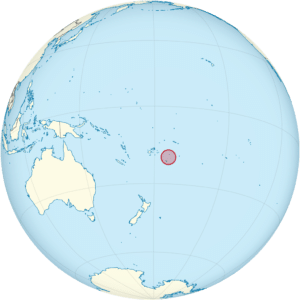Introduction:
Tonga, officially named the Kingdom of Tonga, is a Polynesian country, and also an archipelago comprising 169 islands, of which 36 are inhabited. The archipelago’s total surface area is about 750 square kilometers (290 sq mi) scattered over 700,000 square kilometers (270,000 sq mi) of the southern Pacific Ocean. As of 2016, Tonga had a population of 100,651, 70% of whom resided on the main island, Tongatapu.

Tonga stretches across approximately 800 kilometers (500 mi) in a north–south line. It is surrounded by Fiji and Wallis and Futuna (France) to the northwest; Samoa to the northeast; New Caledonia (France) and Vanuatu to the west; Niue (the nearest foreign territory) to the east; and Kermadec (New Zealand) to the southwest. Tonga is about 1,800 kilometers (1,100 mi) from New Zealand’s North Island.
From 1900 to 1970, Tonga had British protected-state status. The United Kingdom looked after Tonga’s foreign affairs under a Treaty of Friendship, but Tonga never relinquished its sovereignty to any foreign power. In 2010, Tonga took a decisive step away from its traditional absolute monarchy and towards becoming a fully functioning constitutional monarchy, after legislative reforms paved the way for its first partial representative elections.
History:
An Austronesian-speaking group linked to what archaeologists call the Lapita cultural complex reached and inhabited Tonga sometime between 1500 and 1000 BC. Scholars still debate exactly when Tonga was first settled, but thorium dating confirms that settlers had arrived in the earliest known inhabited town, Nukuleka, by 888 BC, ± 8 years. Tonga’s pre-contact history was shared via oral history, which was passed down from generation to generation.
By the 12th century, Tongans and the Tongan monarch, the Tuʻi Tonga, had acquired a reputation across the central Pacific—from Niue, Samoa, Rotuma, Wallis & Futuna, New Caledonia to Tikopia—leading some historians to speak of there having been a Tuʻi Tonga Empire during that period. There are also known to have been civil wars in Tonga in the 15th and 17th centuries.
The Tongan people first encountered Europeans in 1616, when the Dutch vessel Eendracht, captained by Willem Schouten, made a short visit to the islands for the purpose of engaging in trade. Later, other Dutch explorers arrived, including Jacob Le Maire (who visited the northern island of Niuatoputapu); and Abel Tasman (who visited Tongatapu and Haʻapai) in 1643. Later noteworthy European visitors included James Cook, of the British Royal Navy, in 1773, 1774, and 1777; Spanish Navy explorers Francisco Mourelle de la Rúa in 1781; Alessandro Malaspina in 1793; the first London missionaries in 1797; and the Wesleyan Methodist minister, Reverend Walter Lawry, in 1822.
Whaling vessels were among the earliest regular Western visitors. The first of these on record is the Ann & Hope, which was reported to have been seen among the islands of Tonga in June 1799. The last known whaling visitor was the Albatross in 1899. That ship arrived in Tonga seeking a re-supply of water, food and wood. The islands most regularly visited by Westerners were Ata, ‘Eua, Ha’apai, Tongatapu and Vava’u. Sometimes Tongan men were recruited to serve as crewmen on these vessels.
The United States Exploring Expedition visited Tonga in 1840.
In 1845, an ambitious young Tongan warrior, strategist, and orator named Tāufaʻāhau united Tonga into a kingdom. He held the chiefly title of Tuʻi Kanokupolu, but had been baptized by Methodist missionaries with the name Siaosi (“George”) in 1831. In 1875, with the help of missionary Shirley Waldemar Baker, he declared Tonga a constitutional monarchy; formally adopted the Western royal style; emancipated the “serfs”; enshrined a code of law, land tenure, and freedom of the press; and limited the power of the chiefs.

